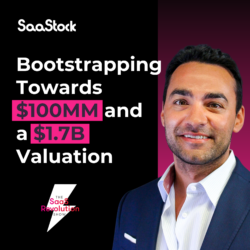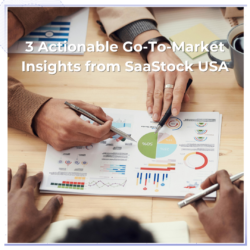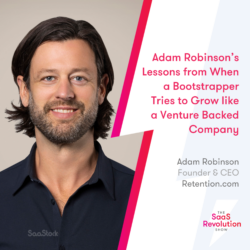Local SaaS events provide a unique platform to engage directly with prospects, customers, and industry peers. When executed well, these events can elevate your brand, foster community, and ultimately drive growth. Achieving event success requires a meticulous, step-by-step approach that covers every phase—from initial registration to post-event follow-up. Below is an in-depth guide that elaborates on each stage to help you plan, execute, and follow up on a local SaaS event that leaves a lasting impression.
Phase 1: Registration & Pre-Event Engagement
1. Define Your Objectives and Audience
Before you even open registration, clarity on your goals is essential.
- Identify Goals:
Determine whether your primary aim is to launch a new feature, educate users on best practices, or boost brand awareness. Clear objectives will shape every aspect of your event planning—from the agenda to the marketing materials. - Target Audience:
Pinpoint the segments you wish to attract. Is your focus on existing customers for retention, potential leads for acquisition, or industry influencers for brand advocacy? Understanding your audience helps tailor your content and communication. - Key Messaging:
Develop core messages that resonate with your audience’s needs. Ensure that every piece of content—be it an email invite or a landing page—is designed to showcase the benefits of attending the event, whether it’s learning, networking, or exploring innovative solutions.
2. Create a Compelling Registration Process
The registration phase is your first direct interaction with potential attendees. Make it count.
- User-Friendly Form:
Design your registration form to be intuitive and straightforward. Only ask for essential information (e.g., name, email, company, and job title) to avoid overwhelming prospects. The goal is to reduce friction and encourage sign-ups. - Clear Call-to-Action:
Craft a strong, unambiguous call-to-action (CTA) like “Reserve Your Seat Today” or “Join the SaaS Revolution.” Ensure the CTA is prominently displayed on your event landing page. - Visual Appeal:
Use high-quality visuals consistent with your brand identity. Incorporate your logo generator to create eye-catching logos for your event branding, ensuring a strong and professional first impression, brand colors, and engaging graphics to build trust and excitement. A well-designed registration page sets the tone for the event and encourages a positive first impression.
3. Pre-Event Content and Communication
Keep registrants engaged from the moment they sign up until the event begins.
- Confirmation Emails:
Immediately after registration, send a confirmation email that includes all relevant event details such as date, time, location, agenda highlights, and what attendees can expect. This email should also reassure them that their spot is secured. - Pre-Event Surveys:
Consider distributing a short survey to gauge topics of interest, preferred speakers, or specific challenges they face in the SaaS space. This feedback can help you refine your event content to better address audience needs. - Social Media Teasers:
Generate buzz by sharing behind-the-scenes glimpses, speaker introductions, or exciting event updates across social media platforms. Use dedicated hashtags and encourage registrants to join the conversation, fostering a community even before the event, creating Facebook group events..
4. Leverage Partnerships and Influencers
Expanding your reach through collaboration can dramatically boost your event’s profile.
- Co-Branded Promotions:
Collaborate with strategic partners and industry influencers to co-promote the event. This could involve joint webinars, guest blog posts, or shared social media content that extends your reach beyond your current network. - Guest Speakers:
Secure well-known speakers or thought leaders in the SaaS industry to attract a larger audience. Their involvement not only adds credibility but also incentivizes registration as attendees gain access to expert insights.
Phase 2: Pre-Event Preparation
5. Develop a Detailed Agenda
A well-crafted agenda is the blueprint of your event. It guides your flow and sets clear expectations.
- Break It Down:
Structure your event into distinct segments, such as keynote sessions, panel discussions, breakout sessions, and networking intervals. This variety keeps the energy high and caters to different attendee interests. - Interactive Elements:
Incorporate interactive sessions like Q&A rounds, live demos, and team bonding workshops. These elements provide opportunities for engagement, ensuring that attendees aren’t just passive listeners but active participants. - Buffer Time:
Plan for short breaks between sessions to prevent fatigue and allow for informal networking. This also gives your team time to manage any unforeseen delays or technical issues.
6. Prepare Your Content and Materials
Quality content and supporting materials are critical to delivering value during the event.
- Presentation Decks:
Create visually appealing slide decks that convey your key messages clearly and succinctly. Ensure your slides use minimal text, powerful visuals, and are aligned with your brand aesthetics. - Demo Environments:
If you plan to showcase your software, ensure that demo environments are thoroughly tested and stable. A seamless demo can significantly impact how attendees perceive your product. - Printed Materials:
Consider preparing physical handouts, brochures, or branded swag. These materials not only reinforce your event messaging but also serve as tangible reminders of your brand after the event is over.
7. Test Your Technology
Technology can be the backbone of a smooth event experience, especially if you incorporate digital or hybrid elements.
- Audio/Visual Checks:
Conduct comprehensive checks of all presentation equipment. Test microphones, projectors, and video conferencing tools ahead of time to ensure there are no disruptions during live sessions. - Internet Connectivity:
Secure a robust and stable internet connection. If your event relies on live demos or real-time social media integration, a backup plan (like a mobile hotspot) can be a lifesaver. - Backup Plans:
Prepare for potential technical glitches by having spare devices and detailed troubleshooting guides ready. Knowing you have a contingency plan helps reduce stress and keeps the event on track.
8. Train Your Team
An informed and well-prepared team is essential to delivering a flawless event experience.
- Run-Through Sessions:
Organize rehearsals for all presenters and event staff. Simulate the entire event from start to finish to identify any gaps or areas needing improvement. - Role Clarity:
Clearly define roles and responsibilities. Whether it’s handling the registration desk, moderating sessions, or managing technical support, each team member should know exactly what’s expected. - Customer-Focused Training:
Equip your team with the skills to engage with attendees. Train them on common FAQs, product details, and conflict resolution to ensure they can offer exceptional service throughout the event.
Phase 3: Event Day Execution
9. Seamless Check-In and Onboarding
The first moments of the event set the tone for the entire experience.
- Digital Check-In:
Utilize mobile check-in apps or QR codes to speed up the registration process. This minimizes wait times and creates a professional, tech-savvy impression. - Welcome Packages:
Distribute welcome kits that include the event agenda, speaker bios, branded merchandise, and useful information about the venue and schedule. These kits help attendees feel prepared and valued from the outset. - Warm Greetings:
Ensure your staff is on hand to welcome guests with a friendly demeanor. A warm greeting can significantly impact an attendee’s overall experience, making them feel immediately comfortable and engaged.
10. Deliver Engaging and Interactive Sessions
Keep the momentum high with dynamic and interactive event sessions.
- Dynamic Presentations:
Encourage speakers to break away from static presentations. Incorporate live polls, interactive Q&A sessions, and real-time feedback mechanisms to keep the audience engaged. - Networking Opportunities:
Designate specific times or areas for networking. Whether it’s through structured breakout sessions or informal coffee breaks, fostering connections among attendees can enhance the overall experience. - Monitor Engagement:
Have team members actively monitor audience engagement. Use this feedback to adjust the pacing or format of sessions if necessary, ensuring that the event remains dynamic and responsive to attendee needs.
11. Capture the Experience
Documenting your event creates lasting value and provides material for future marketing efforts.
- Photography and Videography:
Hire professionals to capture high-quality photos and videos of key moments, speaker sessions, and candid attendee interactions. These assets are invaluable for post-event promotions. - Social Media Interaction:
Encourage attendees to share their experiences on social media using a dedicated event hashtag. Live updates and behind-the-scenes content can amplify your reach and engage both on-site and remote audiences. - Event Archives:
Consider creating a digital archive of the event, including recorded sessions, interviews, and highlights. This content can be repurposed using AI for marketing campaigns, webinars, or training materials.
Phase 4: Post-Event Follow-Up
12. Send a Thank-You Note and Event Recap
Post-event communication reinforces positive experiences and nurtures ongoing relationships.
- Personalized Thank-You Emails:
Within 24–48 hours, send personalized thank-you emails to all attendees. Express gratitude for their participation, and include key event highlights, photos, or a link to session recordings. - Event Recap:
Create a detailed event recap that outlines the main takeaways, speaker insights, and memorable moments. This recap can be published on your website, blog, or social media channels to extend the event’s impact. - Downloadable Content:
Offer a downloadable version of the event recap, complete with infographics and key statistics. This not only provides value to attendees but also serves as a lasting reminder of the event.
13. Gather Feedback
Feedback is a critical component for learning and future improvement.
- Post-Event Surveys:
Distribute surveys to capture attendee feedback on various aspects of the event—from content and speakers to logistics and overall experience. Keep the survey concise but comprehensive. - Direct Outreach:
For key participants or influential attendees, consider personal follow-up calls or emails to gain deeper insights. This qualitative feedback can be extremely valuable for refining future events. You can also use AI receptionist services to handle follow-up calls efficiently and ensure no valuable event feedback opportunity is missed. - Analyze Results:
Compile the feedback to identify trends and areas for improvement. Use these insights to adjust your strategy, content, or logistics for your next event.
14. Nurture Leads and Continue Engagement
The event is just the beginning of an ongoing relationship with your audience.
- Segmented Follow-Up:
Categorize attendees based on their interests, engagement levels, or stage in the sales funnel. Send tailored follow-up content that speaks directly to their needs and invites further interaction. - Exclusive Offers:
Reward attendees with exclusive offers, such as free trials, product demos, or early access to new features. These offers can convert leads into loyal customers. - Content Sharing:
Provide additional resources such as blog posts, case studies, white papers, or recorded webinars that deepen the connection and reinforce the event’s themes.
Following up with attendees after an event is just like following up with customers — you should prompt them to leave a review on the event or company page to build your brand’s credibility through social proof. Automating this process ensures you capture positive experiences while they’re still fresh.
15. Analyze Performance and Iterate
Reviewing and learning from your event is crucial for continuous improvement.
- Measure Key Metrics:
Track registration numbers, attendance rates, engagement levels (social media activity, session participation), and conversion metrics. Analyze these metrics to determine the overall success of the event. - Team Debrief:
Hold a debriefing session with your team to discuss successes, challenges, and unexpected issues. Document lessons learned and identify actionable improvements. - Post-Event Report:
Compile a comprehensive post-event report that includes quantitative metrics, qualitative feedback, and recommendations for future events. This report serves as a roadmap for refining your event strategy.
Final Thoughts
From registration to follow-up, every phase of your local SaaS event requires careful planning, proactive engagement, and a commitment to continuous improvement. By following this step-by-step guide, you can create an event that not only meets your business objectives but also leaves a lasting impact on every participant.
The ultimate goal is to transform attendees into loyal customers and brand advocates. With a strategic approach that spans detailed pre-event preparation, seamless execution on the day, and thoughtful post-event follow-up, your event can become a key pillar of your marketing strategy. Embrace these best practices, iterate based on feedback, and watch as your local SaaS event becomes a benchmark for success.
Happy planning, and here’s to your next successful event!




